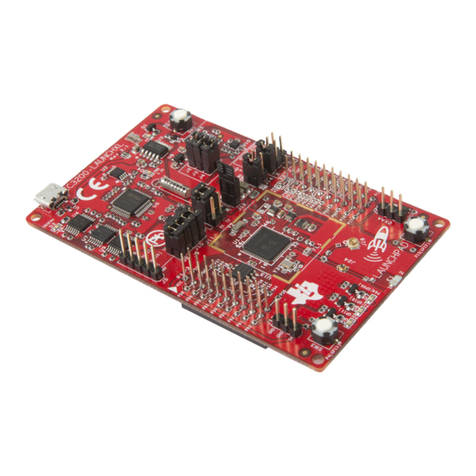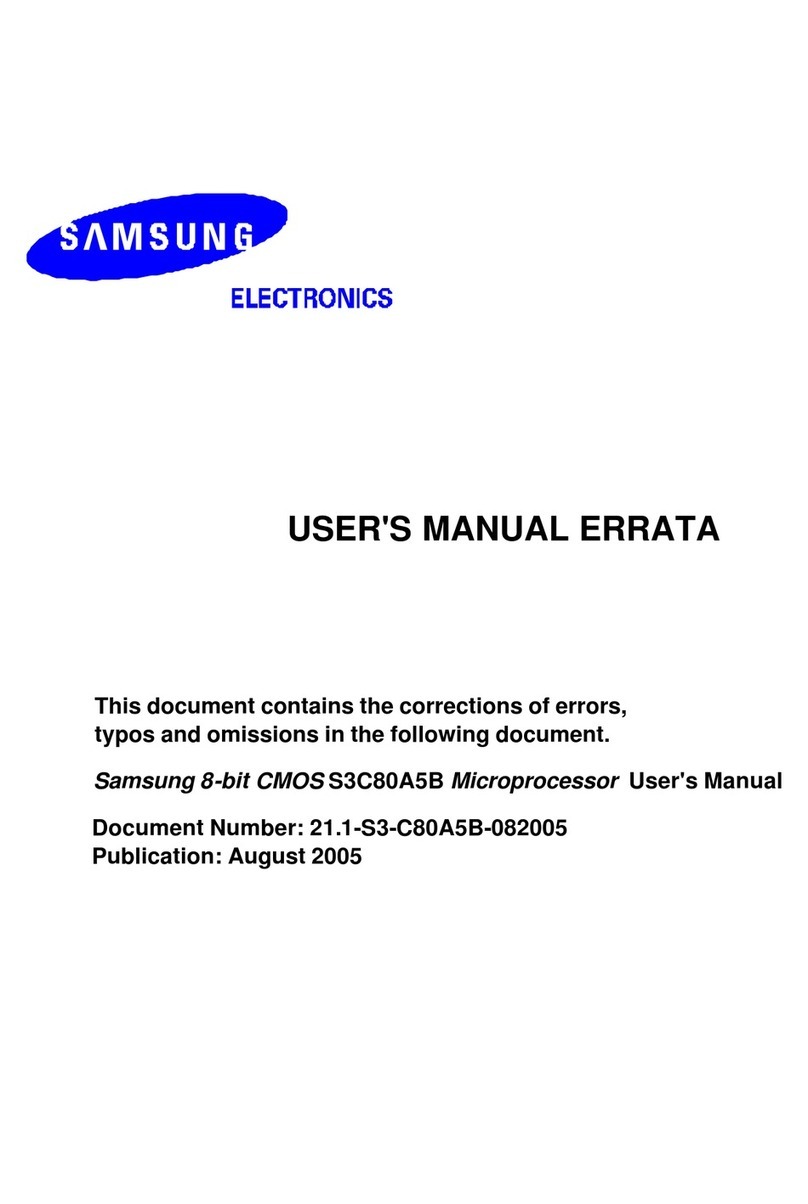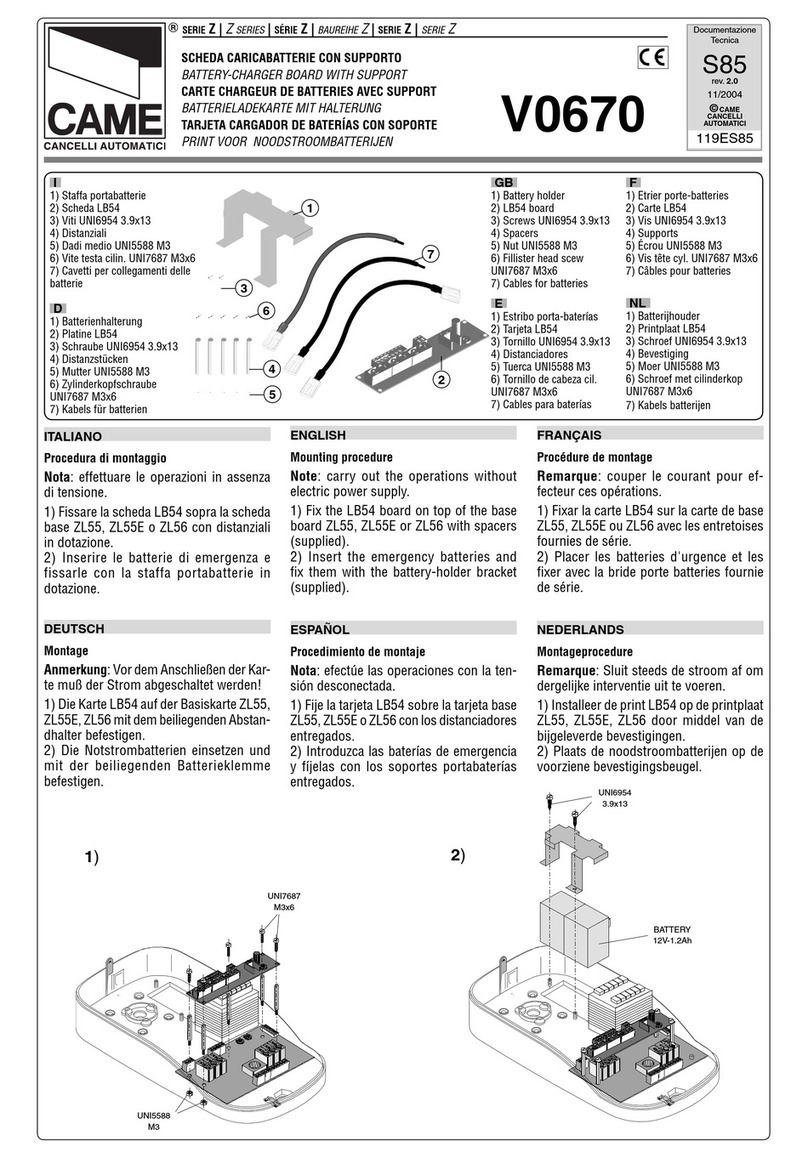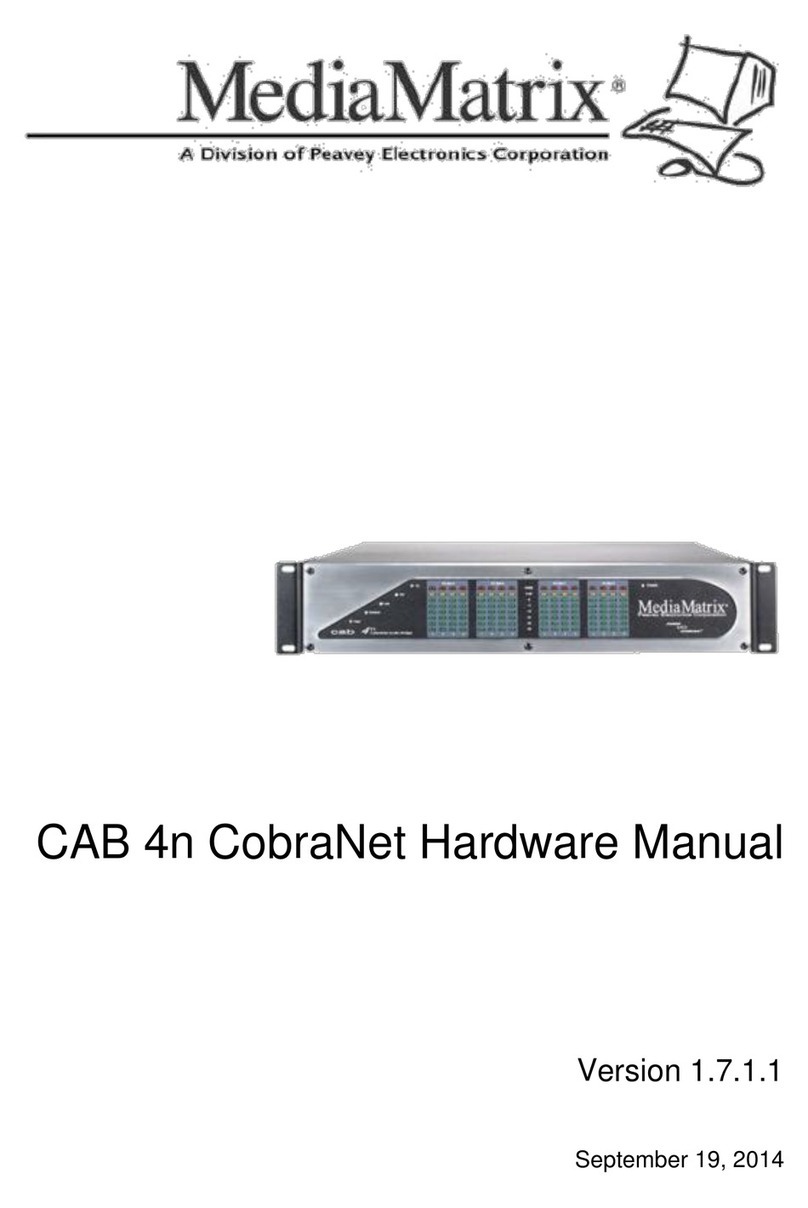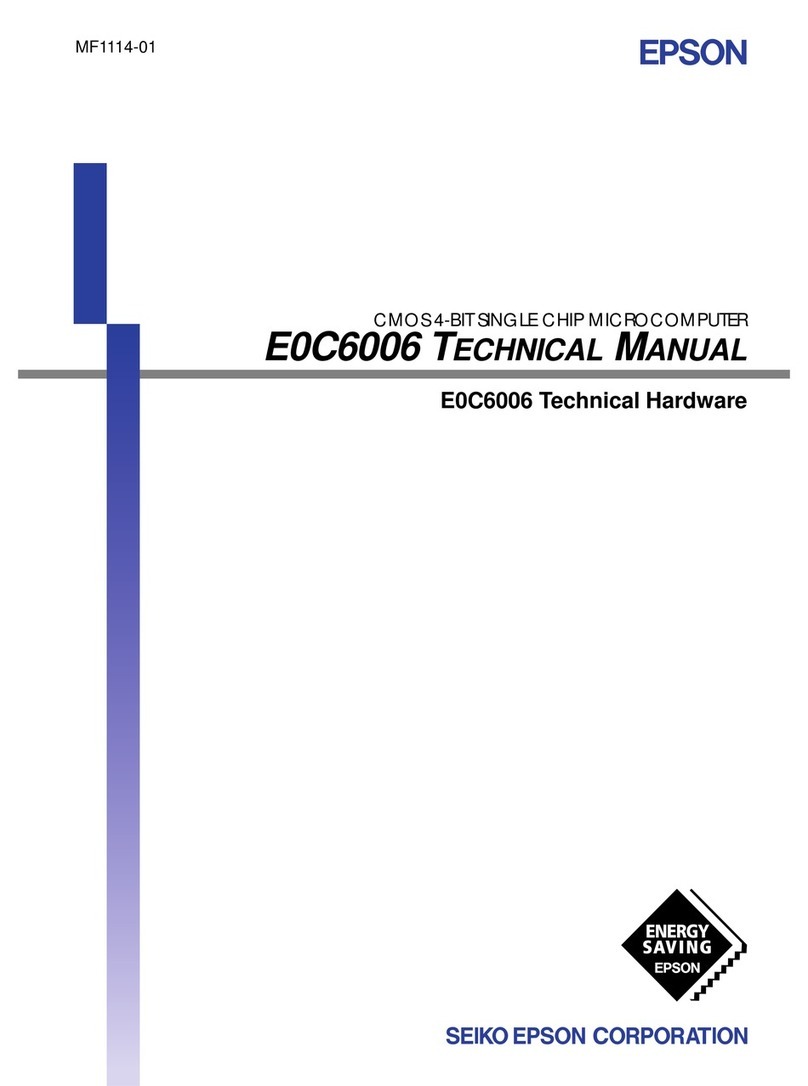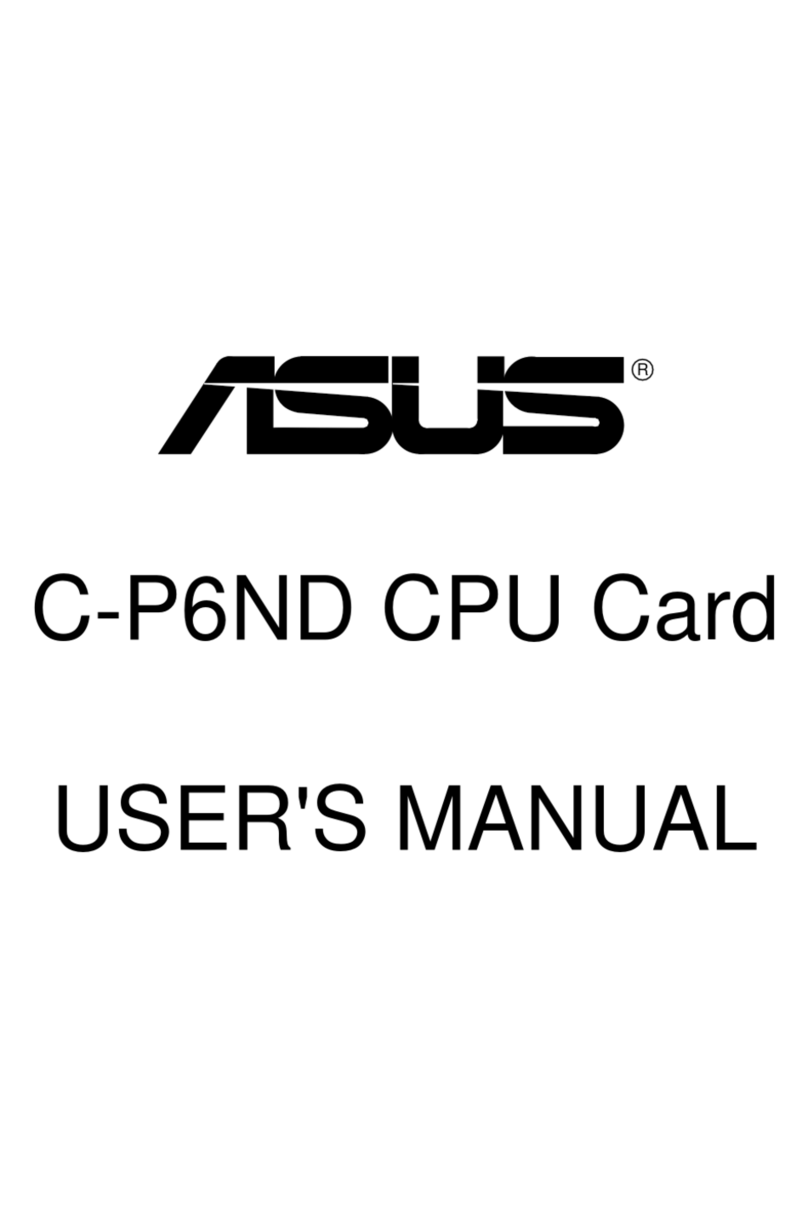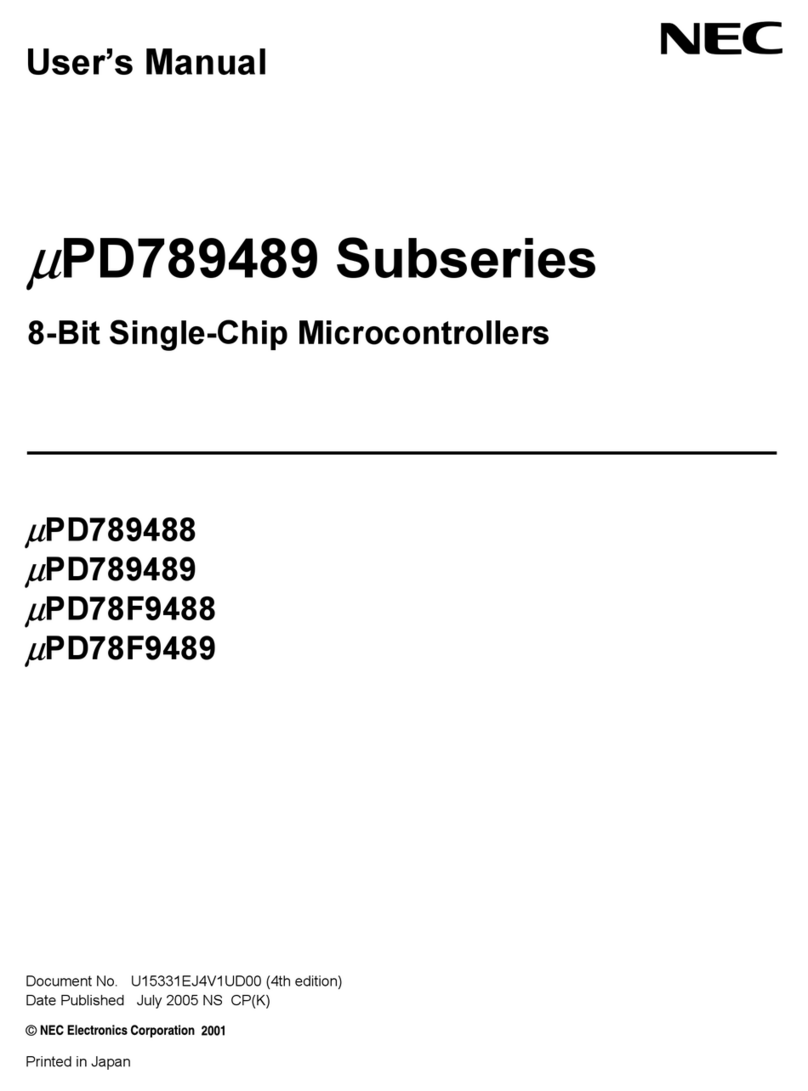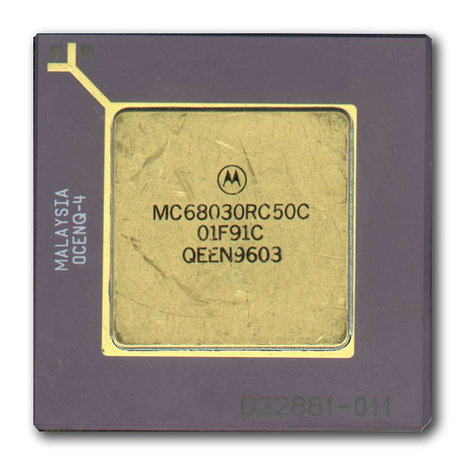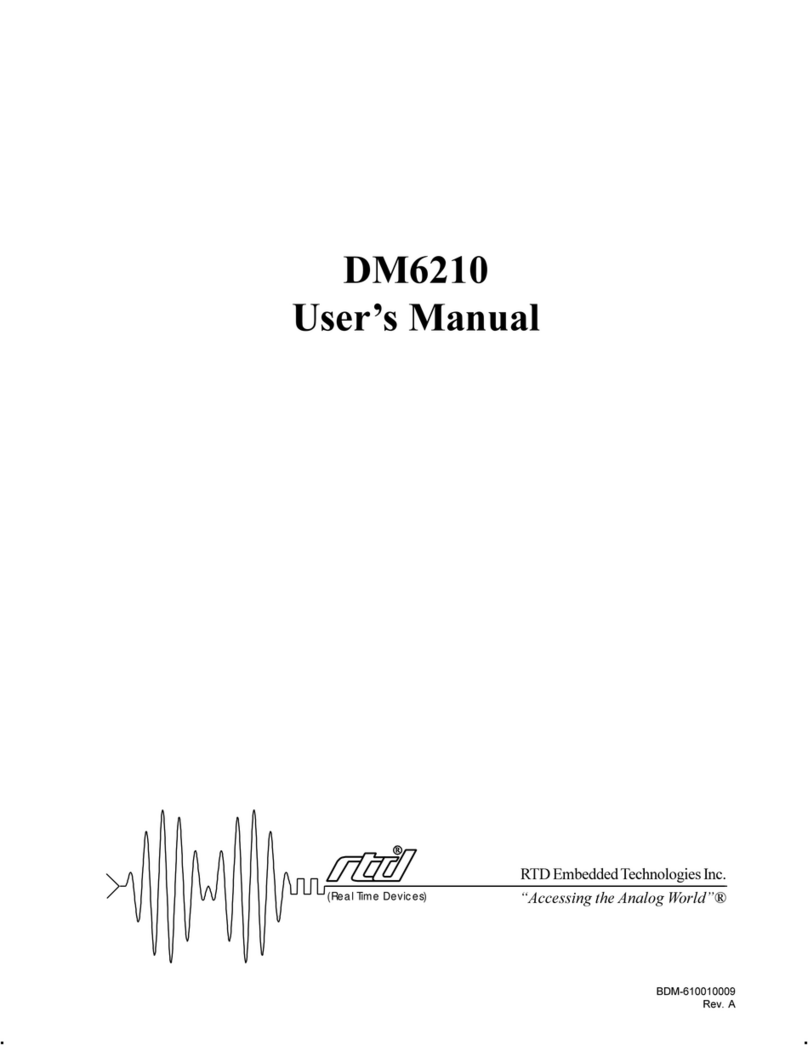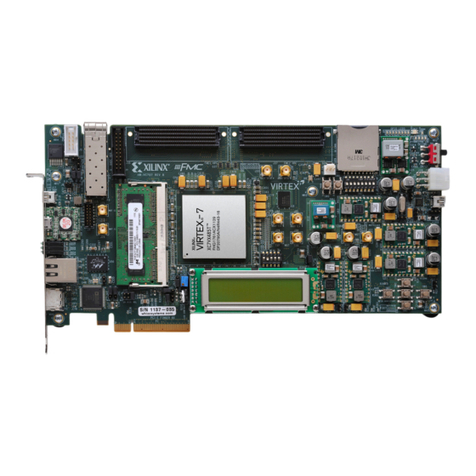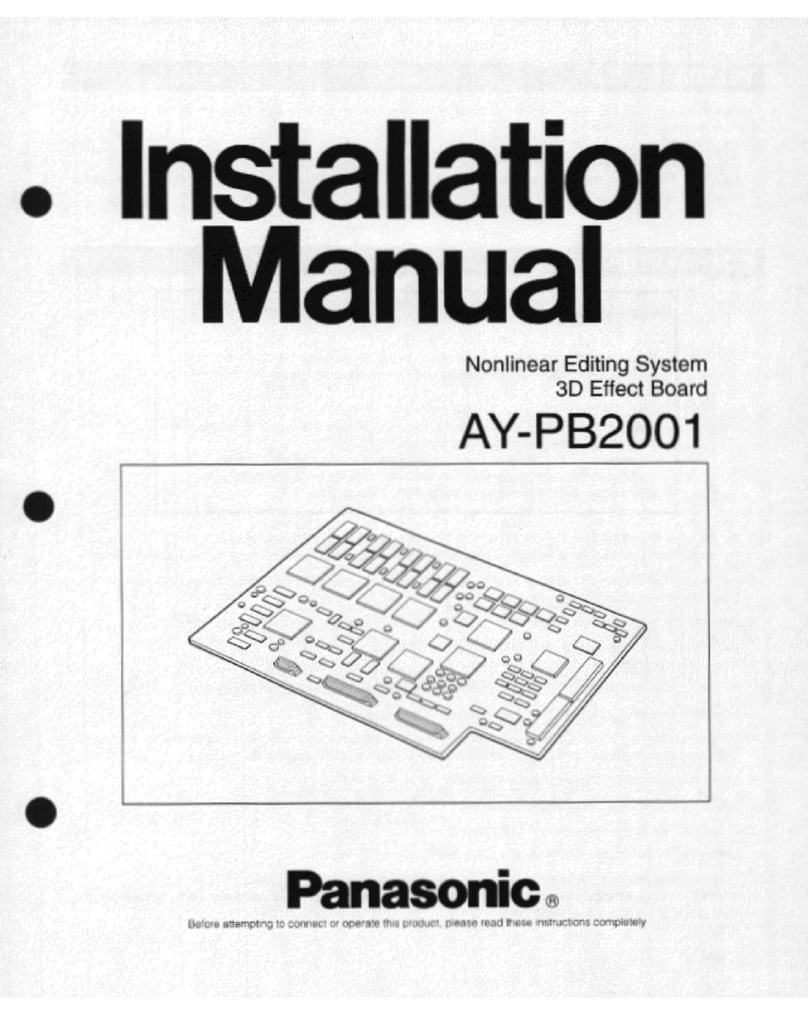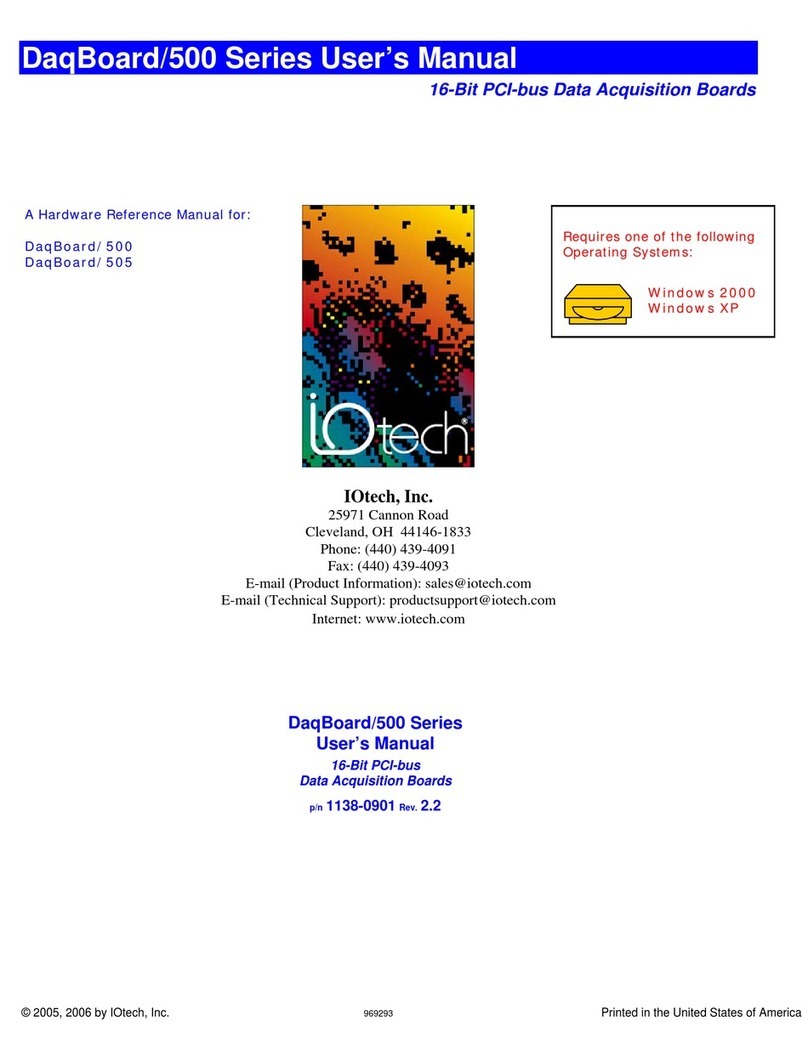Solvimus MBUS-M13 Series User manual

MBUS-M13 - USER MANUAL
MBUS-M13
M-Bus-Master
OEM-Module
Version: 1.09
Date: 6 December 2022
Authors:
Remo Reichel, Frank Richter
solvimus GmbH
Ratsteichstr. 5
98693 Ilmenau
Germany
solvimus GmbH – Ratsteichstr. 5 – 98693 Ilmenau – Germany

MBUS-M13 - User manual
Page intentionally left blank
Page 2/18
UG_EN_MBUS-M13.pdf
Version: 1.09
Released
Frank Richter, 6 December 2022
©solvimus GmbH

MBUS-M13 - User manual
Table of Contents
Table of Contents 3
1 Notes and conventions 4
1.1 Aboutthisdocument ....................................... 4
1.2 Legalbasis............................................. 4
1.2.1 Placingonthemarket................................... 4
1.2.2 Copyrightprotection ................................... 4
1.2.3 Personnelqualification .................................. 4
1.2.4 Intendeduse........................................ 4
1.2.5 Exclusionofliability.................................... 4
1.2.6 Disclaimer......................................... 4
1.3 Symbols .............................................. 5
1.4 Fontconventions ......................................... 5
1.5 Numbernotation ......................................... 5
1.6 Safetyguidelines.......................................... 6
1.7 Scope ............................................... 6
1.8 Abbreviations ........................................... 6
2 Introducing the device 9
2.1 Generalinformation ........................................ 9
2.2 Structureofthemodule...................................... 9
2.3 Deliveryvariants.......................................... 9
2.4 Connectors............................................. 10
2.4.1 Terminals at the edge for pin headers . . . . . . . . . . . . . . . . . . . . . . . . . . 10
2.4.2 ConnectorX1 ....................................... 11
2.4.3 SignallingontheM-Bus ................................. 11
2.5 Technicaldata........................................... 12
2.5.1 Generalspecifications................................... 12
2.5.2 Electrical specifications . . . . . . . . . . . . . . . . . . . . . . . . . . . . . . . . . . 13
2.6 Typical application scenarios . . . . . . . . . . . . . . . . . . . . . . . . . . . . . . . . . . . 13
2.6.1 Wiringdiagrams...................................... 14
2.6.2 Reference circuit with collision indication and EMC precautions . . . . . . . . . . . . 16
2.6.3 Timing and performance diagrams . . . . . . . . . . . . . . . . . . . . . . . . . . . . 16
3 Accessory 18
Frank Richter, 6 December 2022
©solvimus GmbH
Version: 1.09
Released
Page 3/18
UG_EN_MBUS-M13.pdf

MBUS-M13 - User manual
1 Notes and conventions
1.1 About this document
This manual provides guidance and procedures for a fast and efficient installation and start-up of the units
described in this manual. It is imperative to read and carefully follow the safety guidelines.
1.2 Legal basis
1.2.1 Placing on the market
Manufacturer of the MBUS-M13 is the solvimus GmbH, Ratsteichstraße 5, 98693 Ilmenau, Germany.
1.2.2 Copyright protection
This documentation, including all illustrations contained therein, is protected by copyright. The author is
solvimus GmbH, Ilmenau. The exploitation rights are also held by solvimus GmbH. Any further use that
deviates from the copyright regulations is not allowed. Reproduction, translation into other languages, as
well as electronic and phototechnical archiving and modification require the written permission of solvimus
GmbH. Violations will result in a claim for damages. The solvimus GmbH reserves the right to provide for any
alterations or modifications that serve to increase the efficiency of technical progress. All rights in the event
of the granting of a patent or the protection of a utility model are reserved by solvimus GmbH. Third-party
products are always mentioned without reference to patent rights. The existence of such rights can therefore
not be excluded.
1.2.3 Personnel qualification
The product use described in this documentation is intended exclusively for qualified electricians or persons
instructed by these. They must all have good knowledge in the following areas:
•Applicable standards
•Use of electronic devices
1.2.4 Intended use
If necessary, the components or assemblies are delivered ex works with a fixed hardware and software config-
uration for the respective application. Modifications are only permitted within the scope of the possibilities
shown in the documentation. All other changes to the hardware or software as well as the non-intended use
of the components result in the exclusion of liability on the part of solvimus GmbH. Please send any requests
for a modified or new hardware or software configuration to solvimus GmbH.
1.2.5 Exclusion of liability
Study this manual and all instructions thoroughly prior to the first use of this product and respect all safety
warnings, even if you are familiar with handling and operating electronic devices.
The solvimus GmbH accepts no liability for damage to objects and persons caused by erroneous operation, inap-
propriate handling, improper or non-intended use or disregard for this manual, especially the safety guidelines,
and any warranty is void.
1.2.6 Disclaimer
All products, company names, trademarks and brands are the property of their respective holders. Their use
serves only to describe and identify the respective company, product or service. Use of them does not imply
any affiliation with, commercial relationship with or endorsement by them.
Page 4/18
UG_EN_MBUS-M13.pdf
Version: 1.09
Released
Frank Richter, 6 December 2022
©solvimus GmbH

MBUS-M13 - User manual
Firefox is a trademark of the Mozilla Foundation in the U.S. and other countries.
Chrome™browser is a trademark of Google Inc.
Microsoft Excel is a trademark of the Microsoft group of companies.
7-Zip Copyright (C) 1999-2022 Igor Pavlov.
Wireshark: Copyright 1998-2022 Gerald Combs <gerald@wireshark.org> and contributors.
1.3 Symbols
Danger: It is essential to observe this information in order to protect persons from injury.
Caution: It is essential to observe this information in order to prevent damage to the device.
Notice: Boundary conditions that must always be observed to ensure smooth and efficient operation.
ESD (Electrostatic Discharge): Warning of danger to components due to electrostatic discharge. Observe
precautionary measures when handling components at risk of electrostatic discharge.
Note: Routines or advice for efficient equipment use.
Further information: References to additional literature, manuals, data sheets and internet pages.
1.4 Font conventions
Names of paths and files are marked in italics. According to the system the notation is using slash or backslash.
e. g.: D: \Data
Menu items or tabs are marked in bold italics.
e. g.: Save
An arrow between two menu items or tabs indicates the selection of a sub-menu item from a menu or a
navigation process in the web browser.
e. g.: File →New
Buttons and input fields are shown in bold letters.
e. g.: Input
Key labels are enclosed in angle brackets and shown in bold with capital letters.
e. g.: ⟨F5⟩
Programme codes are printed in Courier font.
e. g.: ENDVAR
Variable names, identifiers and parameter entries are marked in italics.
e. g.: Value
1.5 Number notation
Numbers a noted according to this table:
Numbering system Example Comments
Decimal 100 Normal notation
Hexadecimal 0x64 C-like notation
Binary ’100’ In apostrophes
’0110.0100’ Nibbles separated by dots
Table 1: Numbering systems
Frank Richter, 6 December 2022
©solvimus GmbH
Version: 1.09
Released
Page 5/18
UG_EN_MBUS-M13.pdf

MBUS-M13 - User manual
1.6 Safety guidelines
Observe the recognized rules of technology and the legal requirements, standards and norms, and other
recommendations.
Study the instructions for the extinction of fire in electrical installations.
The power supply must be switched off before replacing components and modules.
If the contacts are deformed, the affected module or connector must be replaced, as the function is not guar-
anteed in the long term.
The components are not resistant to substances that have creeping and insulating properties. These include
e.g. aerosols, silicones, triglycerides (ingredient of some hand creams). If the presence of these substances in
the vicinity of the components cannot be excluded, additional measures must be taken:
•Install the components in an appropriate casing.
•Handle components with clean tools and materials only.
Only use a soft, wet cloth for cleaning. Soapy water is allowed. Pay attention to ESD.
Do not use solvents like alcohol, acetone etc. for cleaning.
Do not use a contact spray, because in an extreme case the function of the contact point is impaired
and may lead to short circuits.
Assemblies, especially OEM modules, are designed for installation in electronic housings. Do not touch
the assembly when it is live. In each case, the valid standards and directives applicable to the construction
of control cabinets must be observed.
The components are populated with electronic parts which can be destroyed by an electrostatic discharge.
When handling the components, ensure that everything in the vicinity is well earthed (personnel, work-
place and packaging). Do not touch electrically conductive components, e.g. data contacts.
1.7 Scope
This documentation describes the device manufactured by solvimus GmbH, Ilmenau, and stated on the title
page.
1.8 Abbreviations
Abbreviation Meaning
2G Mobile radio standard, synonym for GSM or GPRS
3G Mobile radio standard, synonym for UMTS
4G Mobile radio standard, synonym for LTE
ACK Acknowledge
AES Advanced Encryption Standard
AFL Authentication and Fragmentation Layer
AI Analog Input
ANSI American National Standards Institute
AO Analog Output
APN Access Point Name
ASCII American Standard Code for Information Interchange
ASHRAE American Society of Heating, Refrigerating and Air-Conditioning Engineers
BACnet Building Automation and Control networks
BBMD BACnet Broadcast Management Device
BCD Binary-coded decimal numbers
BDT Broadcast Distribution Table
BMS Building Management System
CA Certification Authority
CHAP Challenge Handshake Authentication Protocol
CI Control Information
CLI Command line interface
COSEM COmpanion Specification for Energy Metering
CPU Central processing unit
CRC Cyclic redundancy check
CSV Character-Separated Values
Continued on next page
Page 6/18
UG_EN_MBUS-M13.pdf
Version: 1.09
Released
Frank Richter, 6 December 2022
©solvimus GmbH

MBUS-M13 - User manual
Table 2 – Continued from previous page
Abbreviation Meaning
CTS Clear to send
D0 D0 interface (optical interface, IEC 62056-21)
DDC Direct Digital Control
DHCP Dynamic Host Configuration Protocol
DI Digital Input, digital input terminal
DIF Data information field
DIFE Data information field extensions
DIN Deutsches Institut für Normung, German Institute for Standardization
DLDE Direct Local Data Exchange (EN 62056-21, IEC 1107)
DLDERS DLDE communication via RS-232 or RS-485
DLMS Device Language Message Specification
DNS Domain Name System
DO Digital Output, digital output terminal
EEG German Renewable Energy Sources Act
EIA/TIA Electronic Industries Alliance/Telecommunications Industry Association
ELL Extended Link Layer
EMC Electromagnetic compatibility
EN European norm
ESD Electrostatic Discharge
FCB Frame Count Bit
FCV Frame Count Valid Bit
FNN Forum Netztechnik/Netzbetrieb, subgroup of VDE
FSK Frequency Shift Keying
FTP File Transfer Protocol
FTPS FTP via TLS
GB Gigabyte
GMT Greenwich Mean Time
GPRS General Packet Radio Service
GSM Global System for Mobile Communications
HCA Heat cost allocator
HTTP Hypertext Transfer Protocol
HTTPS Hypertext Transfer Protocol Secure
I2C Inter-Integrated Circuit
I/O Input/Output
ICMP Internet Control Message Protocol
ID Identification, Identifier, unique marking
IEC International Electrotechnical Commission
IEEE Institute of Electrical and Electronics Engineers
IoT Internet of Things
IP Internet Protocol or IP address
ISO International Organization for Standardization
JSON JavaScript Object Notation
LAN Local area network
LED Light-Emitting Diode
LSB Least significant byte
LSW Least significant word
LTE Long Term Evolution
M2M Machine-to-Machine
M-Bus Meter-Bus (EN 13757, part 2, 3 and 7)
MAC Medium Access Control or MAC-Adresse
MB Megabyte
MCR Multi Channel Reporting
MDM Meter Data Management
MEI Modbus Encapsulated Interface
MHz Megahertz
MQTT Message Queuing Telemetry Transport
MSB Most Significant Byte
MSW Most Significant Word
MUC Multi Utility Communication, MUC controller
NB-IoT Narrow Band Internet of Things
OBIS Object Identification System
OEM Original Equipment Manufacturer
OMS Open Metering System
PAP Password Authentication Protocol
PEM Privacy Enhanced Mail
PIN Personal Identification Number
PKI Public Key Infrastructure
PLC Programmable Logic Controller
PPP Point-to-Point Protocol
PPPoE Point-to-Point Protocol over Ethernet
PUK Personal Unblocking Key
Continued on next page
Frank Richter, 6 December 2022
©solvimus GmbH
Version: 1.09
Released
Page 7/18
UG_EN_MBUS-M13.pdf

MBUS-M13 - User manual
Table 2 – Continued from previous page
Abbreviation Meaning
RAM Random Access Memory
REQ_UD Request User Data (Class 1 or 2)
RFC Requests For Comments
RSP_UD Respond User Data
RSSI Received Signal Strength Indicator
RTC Real-Time Clock
RTOS Real-Time Operating System
RTS Request to send
RTU Remote Terminal Unit
S0 S0 interface (pulse interface, EN 62053-31)
SCADA Supervisory Control and Data Acquisition
SCP Secure Copy
SFTP SSH File Transfer Protocol
SIM Subscriber Identity Module
SML Smart Message Language
SMTP Simple Mail Transfer Protocol
SND_NKE Send Link Reset
SND_UD Send User Data to slave
SNTP Simple Network Time Protocol
SPST Single Pole Single Throw Relay (closing switch)
SRD Short Range Device
SSH Secure Shell
SSL Secure Sockets Layer
TCP Transmission Control Protocol
THT Through-Hole Technology
TLS Transport Layer Security
U Unit width of the housing (1 U = 18 mm)
UART Universal Asynchronous Receiver Transmitter
UDP User Datagram Protocol
UL Unit load for M-Bus
UMTS Universal Mobile Telecommunications System
UTC Universal Time Coordinated
VDE Verband der Elektrotechnik Elektronik Informationstechnik e.V., German association
VHF Very high frequency
VIF Value information field
VIFE Value information field extensions
VLAN Virtual Local Area Network
VPN Virtual Private Network
WAN Wide Area Network
WLAN Wireless Local Area Network
wM-Bus Wireless Meter-Bus (EN 13757, part 3, 4 and 7)
XML eXtensible Markup Language
XSLT eXtensible Stylesheet Language Transformation
Table 2: Abbreviations
Page 8/18
UG_EN_MBUS-M13.pdf
Version: 1.09
Released
Frank Richter, 6 December 2022
©solvimus GmbH

MBUS-M13 - User manual
2 Introducing the device
2.1 General information
The module MBUS-M13 and its variants are compact M-Bus (Meter-Bus) masters. It serves the power supply
of the connected slaves and also the communication with them.
Especially in the scope of smart metering, the M-Bus is used for automated meter reading.
Additional information on the M-Bus can be found here:
http://www.m-bus.com/
2.2 Structure of the module
The module MBUS-M13 and its variants are populated single-sided. Pin headers with a spacing of 2.54 mm
respectively the corresponding pads serve for the connection.
The following figure shows the module:
Figure 1: The module MBUS-M13
The module integrates all necessary components for the operation of the M-Bus. The internal power supply
generates the bus voltages 24 V and 36 V, as well as 3.3 V for driving an external logic (e.g.: a microcontroller).
2.3 Delivery variants
There are 3 variants available.
The variant MBUS-M13-S is the standard variant. It serves as a fully integrated M-Bus master and level
converter. The connection of the control logic is realized by using a simple TTL UART interface, which is
galvanically isolated from the M-Bus levels. The connection is established through the pads (pins) at the edge
Frank Richter, 6 December 2022
©solvimus GmbH
Version: 1.09
Released
Page 9/18
UG_EN_MBUS-M13.pdf

MBUS-M13 - User manual
of the module.
The variant MBUS-M13-G has no unit for galvanic isolation. It is suitable for simple systems. The connection
is established through the connector X1.
The variant MBUS-M13-M has no internal 3.3 V power supply and no galvanic isolation. The connection is
established exclusively through the connector X1.
In the variants -S and –G, the internal 3.3 V power supply can also be used for direct connection of small
logic modules (e.g.: a microcontroller with LCD display). In that way, certain compact applications such as a
gateway or a data logger only need a single 24 VDC.
The internal 3.3 V supply can handle loads with a maximum current consumption of 50 mA.
Variant Order number
MBUS-M13-S 500325
MBUS-M13-G 500327*
MBUS-M13-M 500328*
*Available upon request
Table 3: Delivery variants
Variants with population are available upon request.
2.4 Connectors
The module MBUS-M13 is connected via pin headers with a spacing of 2.54 mm. The following figure shows
a top view:
Figure 2: Top view on MBUS-M13 with connectors
The function of each pin will be explained in following tables.
2.4.1 Terminals at the edge for pin headers
Terminal Description -S -G -M
TP_VDD galvanically isolated logic, supply 3,0 V...5,0 VDC VDDiso nc nc
TP_RX galvanically isolated logic, UART Receiver (to RX) RXiso nc nc
TP_TX galvanically isolated logic, UART Transmitter (to TX) TXiso nc nc
TP_GND galvanically isolated logic, supply (ground) GNDiso nc nc
TP_MR do not connect nc nc nc
TP_MT do not connect nc nc nc
Continued on next page
Page 10/18
UG_EN_MBUS-M13.pdf
Version: 1.09
Released
Frank Richter, 6 December 2022
©solvimus GmbH

MBUS-M13 - User manual
Table 4 – Continued from previous page
Terminal Description -S -G -M
TP_PGND M-Bus-side power supply, Ground (0 VDC) GND nc nc
TP_PWR M-Bus-side power supply (24 VDC) 24 VDC nc nc
TP_ANT do not connect nc nc nc
TP_BUS- M-Bus, low-side M-Bus- M-Bus- M-Bus
TP_BUS+ M-Bus, high-side M-Bus+ M-Bus+ M-Bus+
Table 4: Function of the terminals for the pin headers
2.4.2 Connector X1
Pin Name Description -S -G -M
1 MB+ M-Bus, high-side nc nc M-Bus+
2 MB- M-Bus, low-side nc nc M-Bus
3 VCC power supply 3.3 VDC nc VDD VDD
4 24V power supply 24 VDC nc 24 VDC 24 VDC
5 GND power supply, Ground nc GND GND
6 #COL collision interrupt (see Section 2.6.2) #COL #COL #COL
7 WRX do not connect nc nc nc
8 WTX do not connect nc nc nc
9 RX UART Receiver (to RX) nc RX RX
10 TX UART Transmitter (from TX) nc TX TX
Table 5: Pin assignment of the connector X1
2.4.3 Signalling on the M-Bus
The M-Bus is a single master multiple slave bus. Therefore, a single bus master controls the bus and the data
traffic on the bus. Several slaves, i.e. meters, can be connected to the bus.
A second physical master is not allowed on the M-Bus.
On a physical level, the M-Bus uses voltage and current modulation to transmit data. The master transmits
telegrams by modulating the bus voltage, the slave transmits telegrams by modulating the current through
the bus. This is shown schematically in the following figure (values of current and voltage may deviate):
Figure 3: Signalling on the M-Bus
The M-Bus follows the principle of request-response, i.e. the master initiates the communication by a re-
quest/command which is then answered/confirmed by the slave. Spontaneous data transmission on the part
of the slaves is not allowed.
Certain terms are used in the M-Bus standard. The basics of communication are taken from IEC 60870-5-101.
Key terms are explained in the table below:
Term Description
ACK ACKnowledge, confirmation of a command, transmitted over the M-Bus as a single char-
acter telegram with content 0xE5.
Application reset Reset of the application layer, command to reset the meter to the default state and to
reset the meter for consecutive telegrams (multipaging).
Broadcast Broadcast, command or request is sent to all slaves, special addresses 0xFE and 0xFF are
used.
C-field Command field, code that indicates the direction in which a telegram is exchanged and the
meaning of the telegram.
Continued on next page
Frank Richter, 6 December 2022
©solvimus GmbH
Version: 1.09
Released
Page 11/18
UG_EN_MBUS-M13.pdf

MBUS-M13 - User manual
Table 6 – Continued from previous page
Term Description
Checksum Check number for checking transmission errors, the checksum the M-Bus uses, results from
the addition of the transmitted data (without telegram header, up to checksum).
Single character One of the three telegram formats the M-Bus uses with a length of exactly 1 byte, telegram
header and end, consisting of checksum and 0x16, are not present, used on the M-Bus for
ACK.
FCB Frame Count Bit, bit in the C field, which is alternately set to 1 or 0 in consecutive
telegrams, consecutive telegrams can be retrieved when the bit changes in the request.
Imark Transmit current of the slave at logical 1, usually 1 UL.
Ispace Transmit current of the slave at logical 0, usually 12.5-21.5 mA.
Short frame One of the three telegram formats the M-Bus uses with a length of exactly 5 bytes, is only
sent from the master to the slave (e.g. commands and instructions), the telegram header
is 0x10 and the telegram ends with the checksum and 0x16.
Long frame One of the three telegram formats the M-Bus uses with a variable length, the telegram
header consists of 0x68 LL LL 0x68 (LL is the length of the telegram in each case), the
telegram ends with the checksum and 0x16.
Multipaging M-Bus method of distributing large amounts of data into several logically consecutive
telegrams, use of the FCB for sequence control.
Primary address M-Bus Link layer Address, this is used to address the requests/commands, address space
0-250, special addresses 253 (0xFD), 254 (0xFE) and 255 (0xFF).
REQ_UD2 REQuest User Data type 2, request for consumption data, transmitted over the M-Bus by
the master as a short frame telegram.
RSP_UD ReSPond User Data, response of the meter to a request for data, transmitted over the
M-Bus by the slave as a long frame telegram.
Secondary address Worldwide unique identification number of the meter, consisting of manufacturer code,
8-digit serial number, medium ID and version number.
Slave select Procedure for extending the address space to the secondary address of the meter, use of
the SND_UD for selecting the meter via the application layer, then selected meter can be
addressed via special address 0xFD.
Standard load Defined idle current that a meter may draw from the M-Bus, according to the standard
1 UL=1.5 mA.
SND_NKE Send Link Reset, initialization command to the slave (reset FCB bit and selection), trans-
mitted by the master as a short frame telegram on the M-Bus.
SND_UD SeND User data, sending data or commands to the meter, transmitted by the master as a
long frame telegram on the M-Bus.
Umark Mark voltage, upper voltage of the M-Bus signals at the master, representation of the
logical 1, idle state, usually 24-42 V.
Uspace Space voltage, lower voltage of the M-Bus signals at the master, representation of the
logical 0, usually 12-30 V.
UL Unit of standard load (see above)
Table 6: M-Bus specific terms
2.5 Technical data
2.5.1 General specifications
Dimensions
The following drawing shows the dimensions of the module:
Page 12/18
UG_EN_MBUS-M13.pdf
Version: 1.09
Released
Frank Richter, 6 December 2022
©solvimus GmbH

MBUS-M13 - User manual
Figure 4: Dimensions and position of pads of MBUS-M13 (values are in mm)
Dimensions (without pin headers): 30 mm x 33 mm x 6.5 mm
Mounting
The device is intended for THT mounting.
•Temperature range for operation: 0-50 °C
•Temperature range for storage: -20-85 °C
•Air humidity: 0-95 % relH
2.5.2 Electrical specifications
Parameter Value
Power supply 24VDC, +2/-10%
Current consumption in idle state (without bus load) approx. 27 mA
Power consumption in the idle state (without bus load) <0.7 W
Power dissipation of internal power circuit (at maximum bus load) <1.3 W
Voltages M-Bus 24 V (space) and 36 V (mark)
Current rating M-Bus 150 mA (approx. 60 unit loads)
Short circuit protection M-Bus PTC resettable fuse at MB+
Trip point of resettable fuse (at 25°C ambient temperature), approx. 900 ms @ 360 mA,
theoretical values according to the data sheet approx. 450 ms @ 440 mA,
(without taking the internal impedance of the module into account) approx. 220 ms @ 530 mA,
approx. 50 ms @ 3300 mA
Reset behaviour of fuse (at 25 °C ambient temperature) approx. 2.5 s @ 36 mA
Power supply for logic (isolated side, variant -S only) (TP_VDD) 3.0...5.0 VDC
Power supply for logic (non-isolated side) at X1 (VCC) 3.3 VDC
Current rating of logic power supply (variants -S and -G) at X1 (VCC) 50 mA
Internal pull-up pin #COL at X1 (to VCC, non-isolated part) 1 kΩ
Current rating pin #COL at X1 (sink current) 10 mA
Max. baud rate 19200 bps
Galvanic isolation (variant -S only) 1 kV
Peak inrush-current momentarily for <1µs>3A
Table 7: Electrical specifications
2.6 Typical application scenarios
The module MBUS-M13 is an M-Bus master. In detail, it is a physical level converter, allowing the commu-
nication between a serial UART interface (TTL) and M-Bus slaves.
Frank Richter, 6 December 2022
©solvimus GmbH
Version: 1.09
Released
Page 13/18
UG_EN_MBUS-M13.pdf

MBUS-M13 - User manual
2.6.1 Wiring diagrams
The following examples give a brief overview on how to connect the module. It should be noted that the
nomenclature is chosen according to typical interface transceivers (such as MAX232). TX is therefore TXin,
data transmitted from the logic to the bus, and RX is RXout, data received from the bus to the logic.
Figure 5: Variant MBUS-M13-S with galvanically isolated interface to external logic
Figure 6: Variant MBUS-M13-G with direct connection to external logic
Page 14/18
UG_EN_MBUS-M13.pdf
Version: 1.09
Released
Frank Richter, 6 December 2022
©solvimus GmbH

MBUS-M13 - User manual
Figure 7: Variant MBUS-M13-G powering the external logic (3.3 VDC) on its own (max. 50 mA)
Figure 8: Variant MBUS-M13-M using only the connector X1
Frank Richter, 6 December 2022
©solvimus GmbH
Version: 1.09
Released
Page 15/18
UG_EN_MBUS-M13.pdf

MBUS-M13 - User manual
2.6.2 Reference circuit with collision indication and EMC precautions
Figure 9: Reference circuit for MBUS-M13-S
2.6.3 Timing and performance diagrams
Bus voltage (blue) at the transition of the TXD signal Bus voltage (blue) at the transition of the TXD signal
(purple) on a load of 10 kΩbetween the bus terminals, (purple) on a load of 200 Ωbetween the bus terminals,
test at 9600 bps test at 9600 bps
Bus voltage (blue) at the transition of the TXD signal Bus voltage (blue) at the transition of the TXD signal
(purple) on a load of 10 kΩand 1 µF between the bus (purple) on a load of 10 kΩand 2.2 µF between the bus
terminals, test at 9600 bps terminals, test at 9600 bps
Table 8: Oscillogram of signal transitions
Condition →10 kΩ200 Ω10 kΩ|| 1 µF 10 kΩ|| 2.2 µF
Parameter Unit
Bus voltage high V 36.8 35.6 36.8 36.8
Continued on next page
Page 16/18
UG_EN_MBUS-M13.pdf
Version: 1.09
Released
Frank Richter, 6 December 2022
©solvimus GmbH

MBUS-M13 - User manual
Table 9 – Continued from previous page
Condition →10 kΩ200 Ω10 kΩ|| 1 µF 10 kΩ|| 2.2 µF
Bus voltage low V 24 23.6 24.1 24.3
Fall time µs<3<1approx. 45 approx. 60
Rise time µs<3<3approx. 25 approx. 45
Delay at falling edge (approx.) µs 8 8 12 12
Delay at rising edge (approx.) µs 4 4 4 4
Table 9: Conditions and results of performance measurements
Frank Richter, 6 December 2022
©solvimus GmbH
Version: 1.09
Released
Page 17/18
UG_EN_MBUS-M13.pdf
Other manuals for MBUS-M13 Series
1
Table of contents


